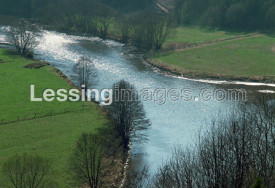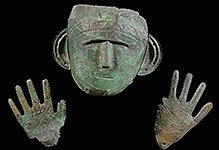
Prehistory
Palaeolithic, Neolithic, Bronze Age and Iron Age.

#03030314
Pottery cinerary urn shaped like a hut, early Italian Iron Age, Villanova, 900-8...

#03030315
Plastered skull from Jericho, 7000-6000 BCE. The removal of the skull and its se...

#03030316
Painted cramic vase, Bronze Age, 1500 BCE.Tripod-footed pot with chequer-board d...

#03030322
Painted jar in the form of a female figure, Anatolian Chalcolotic, around 5000 B...

#03030323
Two female figures, Halaf culture and Late Chalcolithic, around 5000 - 4500 BCE...

#03030333
Decorated bone pin, Early Aurignacian period, about 34,000 years old. Deliberate...

#03030334
Bone flute, Paleolithic (Perigordian), about 32,000 years old. The oldest known...

#03030335
Swimming reindeer, Late Magdalenien, around 12.500 years old. From the rock shal...

#03030336
Spearthrower carved as a mammoth, Late Magdalenian, about 12,500 years old. Spea...

#03030337
Perforated baton with horse and fish engravings, Late Magdalenian, about 12,500...

#03030338
Jadeite axe head, Neolithic, c4000-c2000 BC. This elegant axe has been polished...

#03030339
Hoxne handaxe, Lower Palaeolithic, about 400,000 years ago, from Hoxne, Suffolk,...




